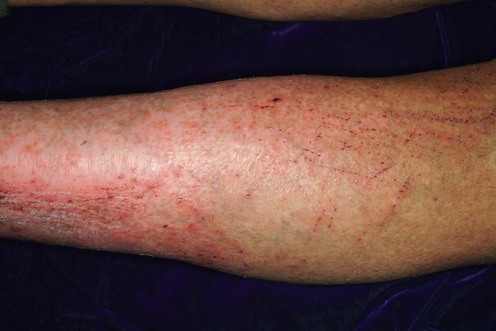Pruritus

Specific investigations
Neuropathic itch
Second-line therapies
Cholestatic itch
First-line therapies
Second-line therapies
Itch associated with cholestasis of pregnancy
First-line therapies
Renal itch
First-line therapies
Second-line therapies
Third-line therapies
Itch associated with malignancy
Itch associated with hematologic disorders
First-line therapies






















 Capsaicin
Capsaicin Gabapentin or pregabalin
Gabapentin or pregabalin Rifampin
Rifampin Natrexone, nalmefene, naloxone
Natrexone, nalmefene, naloxone Cholestyramine
Cholestyramine Ursodeoxycholic acid
Ursodeoxycholic acid Sertraline
Sertraline Albumin-based dialysis
Albumin-based dialysis Ultraviolet B phototherapy
Ultraviolet B phototherapy Parenteral lidocaine
Parenteral lidocaine Dronabinol
Dronabinol Ursodeoxycholic acid
Ursodeoxycholic acid S-adenosyl-L-methionine
S-adenosyl-L-methionine Cholestyramine
Cholestyramine Emollients with high water content
Emollients with high water content Narrowband UVB phototherapy
Narrowband UVB phototherapy Broadband UVB phototherapy
Broadband UVB phototherapy Gabapentin
Gabapentin Pregabalin
Pregabalin Naltrexone
Naltrexone Nalfurafine hydrochloride
Nalfurafine hydrochloride Zinc sulfate
Zinc sulfate Capsaicin 0.03% cream
Capsaicin 0.03% cream Acupuncture: Quchi (LI11) acupoint
Acupuncture: Quchi (LI11) acupoint Homeopathic treatment with verum
Homeopathic treatment with verum Cholestyramine
Cholestyramine Activated charcoal
Activated charcoal Thalidomide
Thalidomide Parathyroidectomy
Parathyroidectomy Paroxetine
Paroxetine Mirtazapine
Mirtazapine Butorphanol
Butorphanol Narrowband UVB phototherapy
Narrowband UVB phototherapy Psoralen photochemotherapy
Psoralen photochemotherapy Paroxetine
Paroxetine Fluoxetine
Fluoxetine Pregabalin
Pregabalin